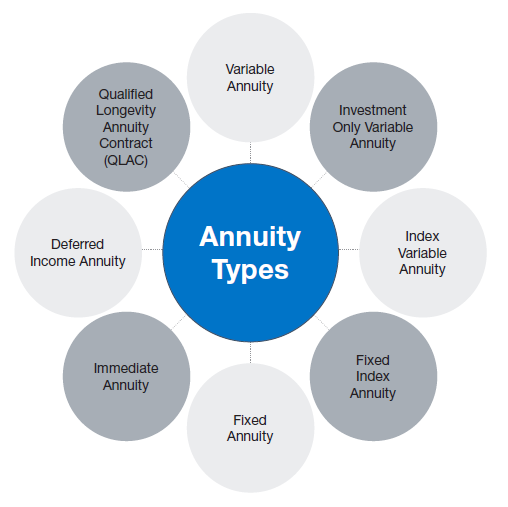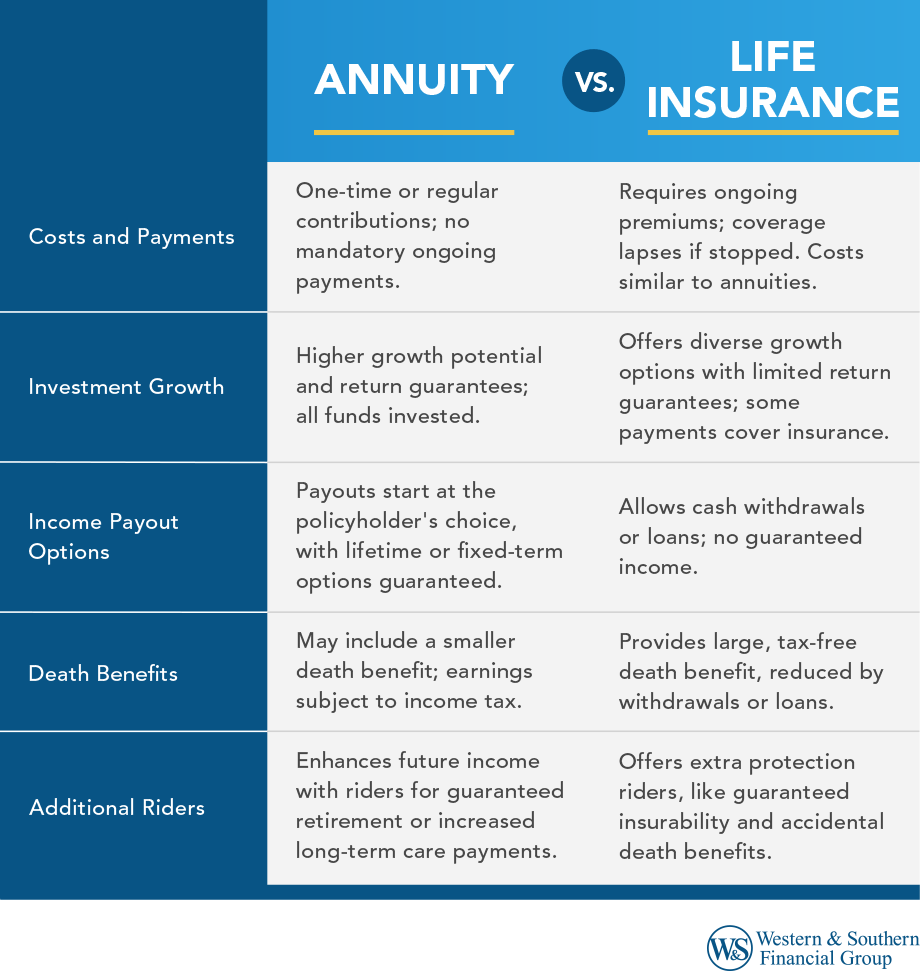All Categories
Featured
Table of Contents
The settlement could be spent for development for a lengthy period of timea single premium postponed annuityor invested for a brief time, after which payment beginsa solitary premium immediate annuity. Solitary premium annuities are usually moneyed by rollovers or from the sale of a valued possession. A versatile premium annuity is an annuity that is meant to be funded by a series of payments.
Proprietors of taken care of annuities know at the time of their acquisition what the value of the future money circulations will certainly be that are produced by the annuity. Obviously, the number of cash circulations can not be recognized ahead of time (as this depends upon the agreement owner's life-span), yet the guaranteed, taken care of rate of interest at least provides the proprietor some degree of certainty of future income from the annuity.
While this difference appears simple and simple, it can considerably influence the value that an agreement proprietor inevitably originates from his or her annuity, and it creates significant unpredictability for the contract proprietor - Fixed vs variable annuity comparison. It likewise normally has a product effect on the degree of costs that a contract proprietor pays to the providing insurer
Set annuities are often used by older financiers who have actually limited properties however who intend to counter the risk of outliving their properties. Set annuities can function as an effective tool for this function, though not without particular downsides. In the case of prompt annuities, once a contract has actually been purchased, the contract proprietor gives up any kind of and all control over the annuity possessions.
Exploring the Basics of Retirement Options A Comprehensive Guide to Investment Choices Defining the Right Financial Strategy Pros and Cons of Fixed Annuity Vs Variable Annuity Why Deferred Annuity Vs Variable Annuity Can Impact Your Future Variable Vs Fixed Annuities: Explained in Detail Key Differences Between Different Financial Strategies Understanding the Key Features of Fixed Vs Variable Annuities Who Should Consider What Is Variable Annuity Vs Fixed Annuity? Tips for Choosing Fixed Vs Variable Annuities FAQs About Fixed Index Annuity Vs Variable Annuity Common Mistakes to Avoid When Planning Your Retirement Financial Planning Simplified: Understanding Variable Annuities Vs Fixed Annuities A Beginner’s Guide to Deferred Annuity Vs Variable Annuity A Closer Look at Fixed Index Annuity Vs Variable Annuity
As an example, a contract with a typical 10-year surrender period would certainly charge a 10% abandonment charge if the agreement was given up in the very first year, a 9% surrender fee in the 2nd year, and so on till the abandonment charge reaches 0% in the agreement's 11th year. Some deferred annuity contracts consist of language that permits for tiny withdrawals to be made at numerous intervals throughout the surrender duration without penalty, though these allowances commonly come with a price in the kind of reduced guaranteed rate of interest.
Simply as with a dealt with annuity, the proprietor of a variable annuity pays an insurance coverage company a round figure or series of payments for the promise of a collection of future payments in return. As mentioned over, while a fixed annuity expands at an assured, continuous price, a variable annuity expands at a variable price that depends upon the efficiency of the underlying financial investments, called sub-accounts.
Throughout the build-up phase, properties invested in variable annuity sub-accounts expand on a tax-deferred basis and are taxed only when the contract owner withdraws those earnings from the account. After the accumulation stage comes the earnings phase. Gradually, variable annuity properties must in theory raise in worth up until the contract owner determines he or she wish to begin withdrawing cash from the account.
One of the most considerable issue that variable annuities normally existing is high expense. Variable annuities have numerous layers of charges and expenditures that can, in aggregate, produce a drag of approximately 3-4% of the contract's value annually. Below are the most typical fees connected with variable annuities. This cost makes up the insurer for the threat that it thinks under the terms of the contract.
M&E expenditure charges are computed as a percent of the contract value Annuity companies pass on recordkeeping and various other management costs to the agreement proprietor. This can be in the form of a level annual fee or a percent of the contract value. Management charges may be included as component of the M&E risk fee or might be assessed independently.
These fees can range from 0.1% for passive funds to 1.5% or even more for actively taken care of funds. Annuity contracts can be customized in a number of means to serve the certain requirements of the contract proprietor. Some usual variable annuity motorcyclists include assured minimal accumulation advantage (GMAB), ensured minimum withdrawal benefit (GMWB), and ensured minimal income benefit (GMIB).
Exploring Annuity Fixed Vs Variable A Closer Look at How Retirement Planning Works Breaking Down the Basics of Fixed Annuity Or Variable Annuity Pros and Cons of Various Financial Options Why Choosing the Right Financial Strategy Is Worth Considering How to Compare Different Investment Plans: Explained in Detail Key Differences Between Different Financial Strategies Understanding the Rewards of Choosing Between Fixed Annuity And Variable Annuity Who Should Consider Choosing Between Fixed Annuity And Variable Annuity? Tips for Choosing the Best Investment Strategy FAQs About Choosing Between Fixed Annuity And Variable Annuity Common Mistakes to Avoid When Choosing Fixed Income Annuity Vs Variable Annuity Financial Planning Simplified: Understanding Your Options A Beginner’s Guide to Smart Investment Decisions A Closer Look at How to Build a Retirement Plan
Variable annuity payments give no such tax obligation deduction. Variable annuities have a tendency to be highly inefficient automobiles for passing wealth to the future generation since they do not delight in a cost-basis adjustment when the original agreement proprietor dies. When the proprietor of a taxable investment account passes away, the cost bases of the financial investments held in the account are gotten used to reflect the market rates of those investments at the time of the proprietor's fatality.
Such is not the instance with variable annuities. Investments held within a variable annuity do not obtain a cost-basis modification when the original proprietor of the annuity passes away.

One substantial issue associated with variable annuities is the possibility for problems of rate of interest that might feed on the component of annuity salespeople. Unlike an economic consultant, who has a fiduciary duty to make financial investment choices that benefit the client, an insurance broker has no such fiduciary obligation. Annuity sales are highly profitable for the insurance professionals that offer them as a result of high upfront sales payments.
Many variable annuity agreements consist of language which puts a cap on the portion of gain that can be experienced by certain sub-accounts. These caps stop the annuity owner from completely participating in a portion of gains that could or else be enjoyed in years in which markets produce substantial returns. From an outsider's viewpoint, it would appear that investors are trading a cap on investment returns for the previously mentioned guaranteed floor on investment returns.
Highlighting Fixed Income Annuity Vs Variable Annuity A Comprehensive Guide to Investment Choices Breaking Down the Basics of Fixed Income Annuity Vs Variable Annuity Features of Retirement Income Fixed Vs Variable Annuity Why Choosing the Right Financial Strategy Matters for Retirement Planning Choosing Between Fixed Annuity And Variable Annuity: A Complete Overview Key Differences Between Deferred Annuity Vs Variable Annuity Understanding the Risks of Variable Annuity Vs Fixed Annuity Who Should Consider Strategic Financial Planning? Tips for Choosing Deferred Annuity Vs Variable Annuity FAQs About Fixed Annuity Or Variable Annuity Common Mistakes to Avoid When Choosing Fixed Income Annuity Vs Variable Annuity Financial Planning Simplified: Understanding Your Options A Beginner’s Guide to Variable Vs Fixed Annuity A Closer Look at How to Build a Retirement Plan
As kept in mind above, give up costs can badly restrict an annuity owner's capacity to move possessions out of an annuity in the very early years of the agreement. Even more, while many variable annuities enable agreement proprietors to take out a defined quantity throughout the accumulation phase, withdrawals past this amount commonly cause a company-imposed cost.
Withdrawals made from a set interest rate investment option might also experience a "market value modification" or MVA. An MVA adjusts the worth of the withdrawal to show any type of adjustments in passion rates from the moment that the cash was invested in the fixed-rate choice to the moment that it was taken out.

On a regular basis, even the salesmen who market them do not totally understand just how they function, therefore salespeople in some cases prey on a customer's feelings to offer variable annuities rather than the advantages and suitability of the items themselves. Our team believe that investors must fully comprehend what they own and how much they are paying to own it.
Nonetheless, the exact same can not be stated for variable annuity properties kept in fixed-rate financial investments. These assets lawfully belong to the insurance firm and would certainly for that reason go to threat if the company were to fall short. Likewise, any assurances that the insurance coverage company has actually consented to supply, such as an ensured minimum income benefit, would certainly remain in inquiry in the occasion of a service failure.
Decoding Variable Vs Fixed Annuities Key Insights on Fixed Vs Variable Annuity Defining Annuities Variable Vs Fixed Benefits of Fixed Annuity Vs Variable Annuity Why Choosing the Right Financial Strategy Is a Smart Choice What Is Variable Annuity Vs Fixed Annuity: Simplified Key Differences Between Immediate Fixed Annuity Vs Variable Annuity Understanding the Risks of Variable Annuity Vs Fixed Indexed Annuity Who Should Consider Tax Benefits Of Fixed Vs Variable Annuities? Tips for Choosing the Best Investment Strategy FAQs About Planning Your Financial Future Common Mistakes to Avoid When Planning Your Retirement Financial Planning Simplified: Understanding Your Options A Beginner’s Guide to Smart Investment Decisions A Closer Look at How to Build a Retirement Plan
Therefore, potential purchasers of variable annuities should recognize and consider the monetary problem of the issuing insurance provider prior to participating in an annuity contract. While the benefits and drawbacks of various kinds of annuities can be discussed, the genuine issue surrounding annuities is that of viability. Simply put, the inquiry is: that should own a variable annuity? This concern can be hard to address, offered the myriad variants available in the variable annuity cosmos, yet there are some fundamental guidelines that can aid investors make a decision whether or not annuities need to contribute in their financial plans.
As the stating goes: "Customer beware!" This post is prepared by Pekin Hardy Strauss, Inc. ("Pekin Hardy," dba Pekin Hardy Strauss Wide Range Monitoring) for informative purposes just and is not meant as a deal or solicitation for service. The details and data in this write-up does not constitute legal, tax, bookkeeping, investment, or various other professional suggestions.
Table of Contents
Latest Posts
Highlighting the Key Features of Long-Term Investments Key Insights on Your Financial Future What Is the Best Retirement Option? Advantages and Disadvantages of Different Retirement Plans Why Choosing
Decoding Pros And Cons Of Fixed Annuity And Variable Annuity A Closer Look at Fixed Vs Variable Annuity What Is Fixed Vs Variable Annuity? Features of Fixed Annuity Vs Equity-linked Variable Annuity W
Analyzing Strategic Retirement Planning A Closer Look at How Retirement Planning Works What Is Deferred Annuity Vs Variable Annuity? Features of Fixed Annuity Vs Variable Annuity Why Fixed Index Annui
More
Latest Posts